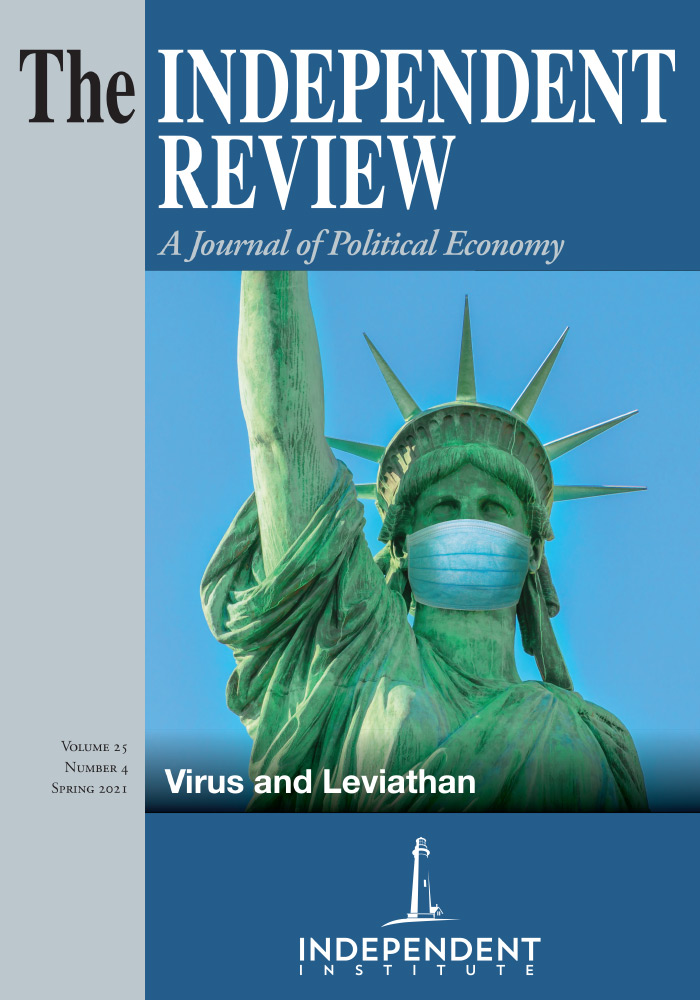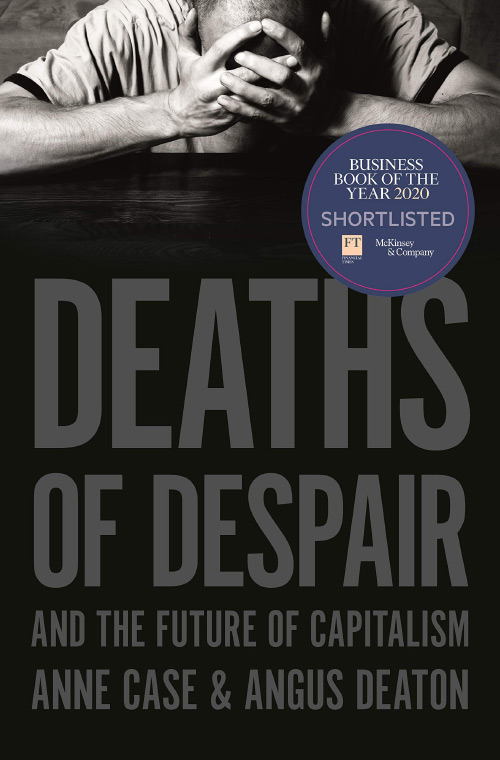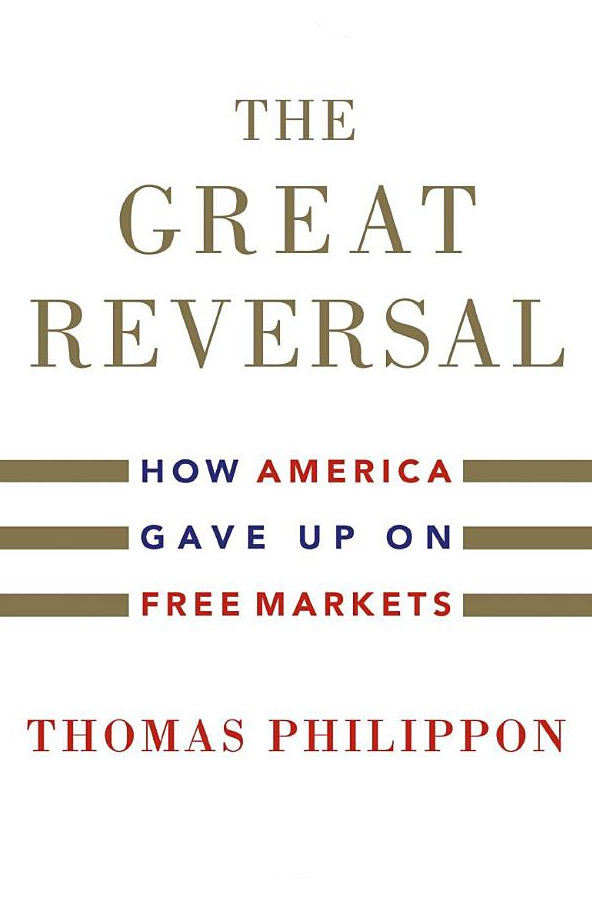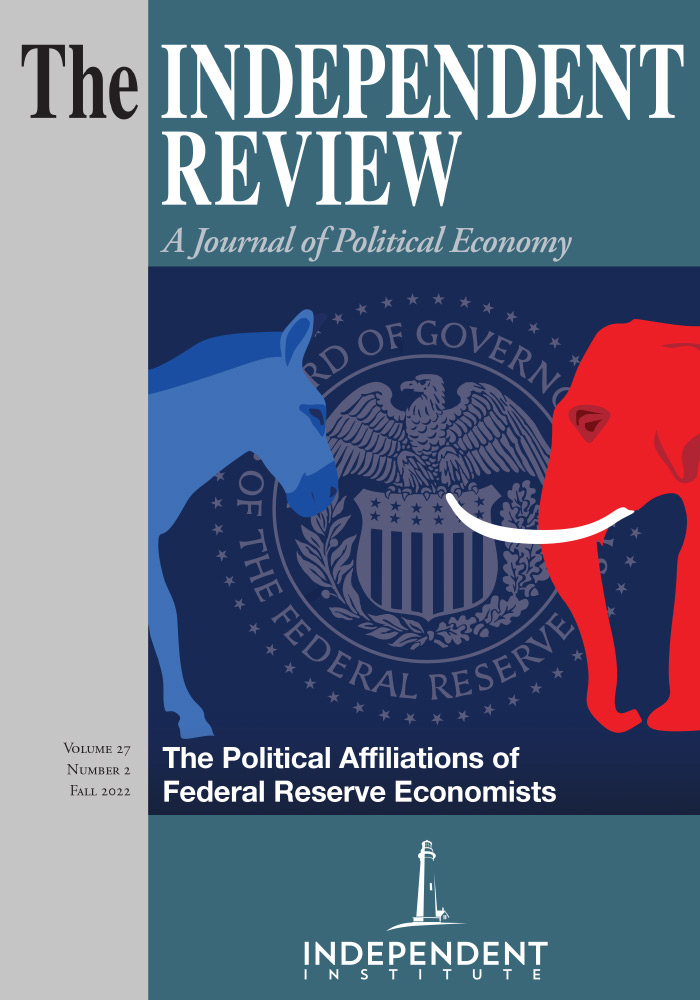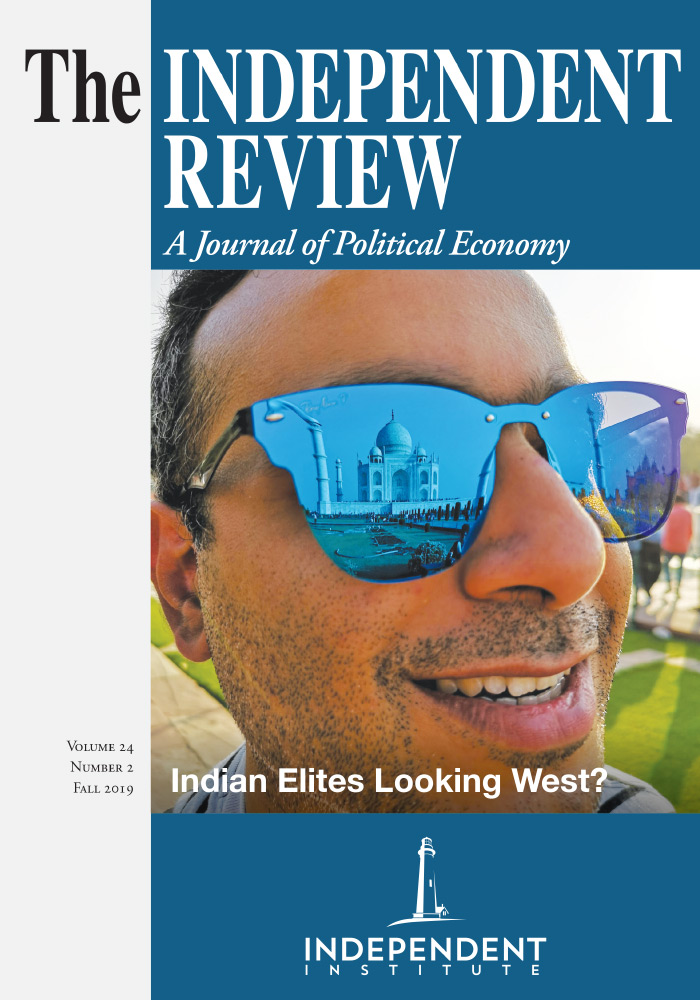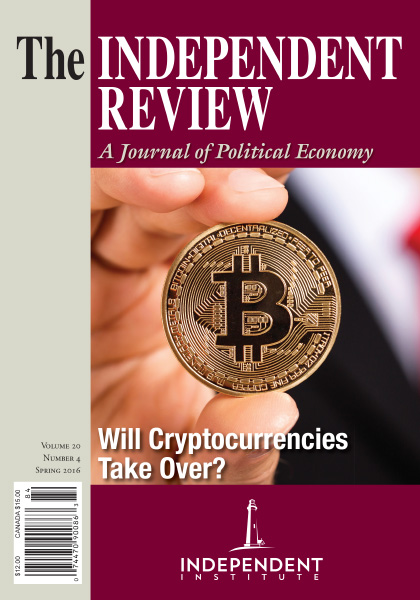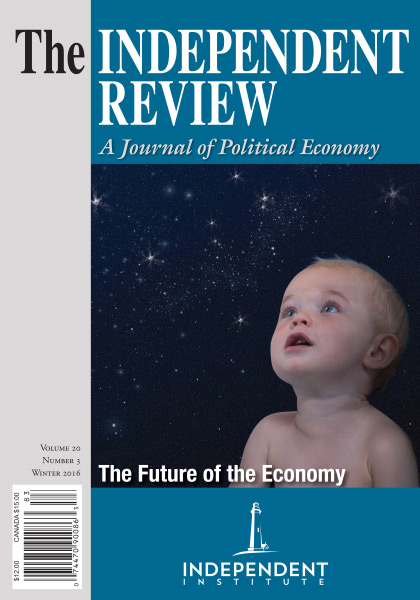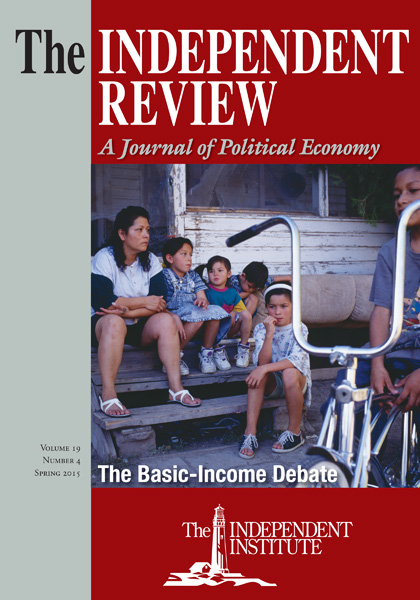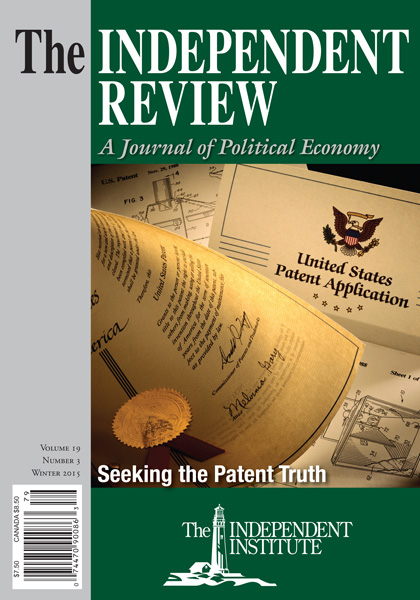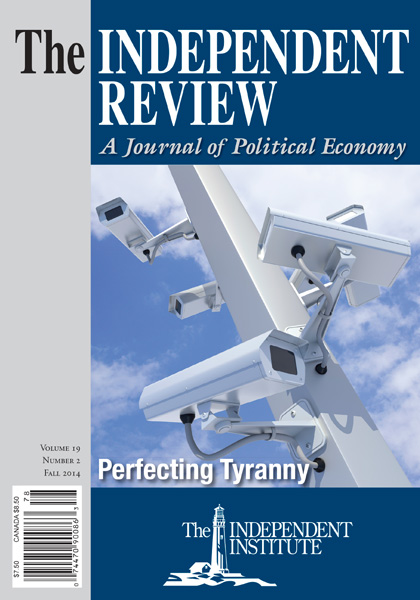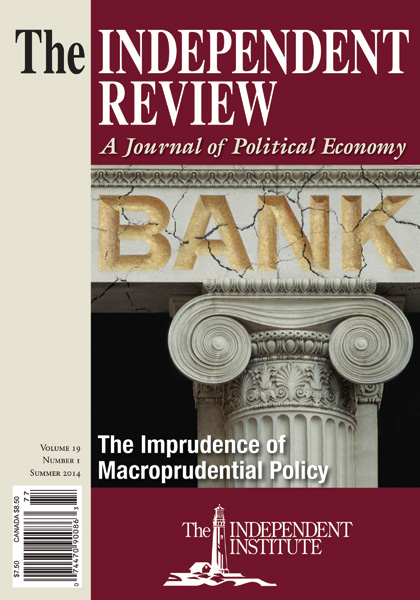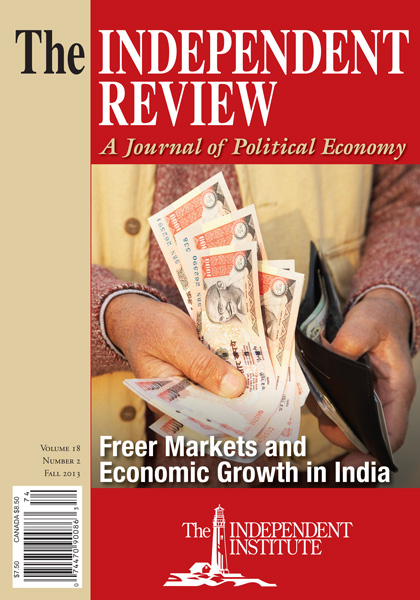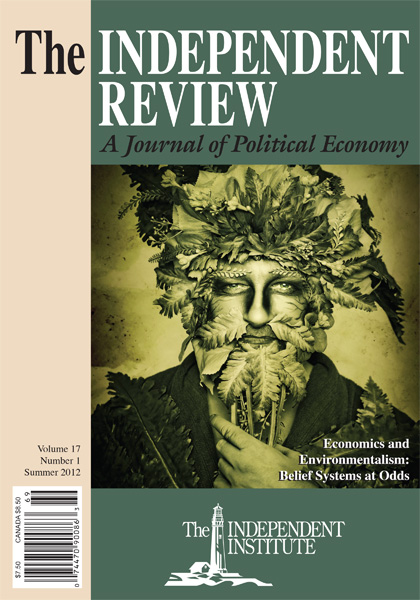My Duke University colleague, Fredric Jameson, famously observed that for most people it was easier to imagine the end of the world than the end of capitalism. (The Seeds of Time, New York: Columbia University Press, 1994, xii). I expect he’s right, but my explanation is that the alternatives to capitalism are themselves all imaginary. Without exception, all those exercises in romantic socialist fabulism have devolved into smoldering totalitarian wreckage in the real world.
The failure of the alternatives doesn’t mean that capitalism always succeeds, of course. Two recent books on the failure of capitalism in fin de siècle America offer contrasting diagnoses and different prescriptions, but they agree on the basic symptoms. Importantly, all the authors are free market liberals, who would defend a strong presumption in favor of free markets and widely shared prosperity. Inequality is at best a necessary evil, and concentrated, persistent, or expanding inequality is a problem on a par with the maintenance of free markets.
There are differences in the two treatments, however. Case and Deaton note that their book should be seen as a companion—or, they might say, partial corrective—to Deaton’s earlier book (The Great Escape: Health, Wealth, and the Origins of Inequality, Princeton University Press, 2013). The Great Escape noted that what Deaton identified as the two most important measures of human flourishing, health and widely shared GDP, had expanded as a result of the adoption of open-market institutions around the world. Deaton was also skeptical, in Escape, about the capacity of state action—international aid—to solve problems of development and poverty. In Deaths of Despair, by contrast, Deaton (now with Princeton economist Anne Case as collaborator) is much more pessimistic about what capitalism has delivered. Further, the focus of the book has changed, now examining conditions in developed nations. Finally, Case and Deaton look much more favorably on state action as a solution, or at a minimum as a way to mitigate the worst problems.
Nonetheless, Case and Deaton remain optimistic. As I argued in my own recent book, Tomorrow 3.0 (Cambridge University Press, 2018), the first two great paroxysms of economic change, the Neolithic Revolution and the Industrial Revolution, were catastrophic for many. The habits, institutions, and patterns of delivering goods and services that characterize mature systems are not yet developed at the time wrenching change is starting to be felt. As Case and Deaton put it, “the beast [economic revolution] was tamed, not slain ... If we can get the policies right, we can ensure that what is happening today is not a prelude to another great disaster but simply a temporary setback from which we can return to rising prosperity and better health ... The future of capitalism should be a future of hope and not despair” (p. x).
But then why despair now, and what of these “deaths” in the title of the book? The genesis was the recognition, and a surprising one at that, that one of the two key measures was reversing itself. Health was declining, and in some populations it was declining sharply. Average life expectancy among white citizens 45-54 (Anne Case and Angus Deaton, 2015. “Rising Morbidity and Mortality in Midlife among White Non-Hispanic Americans in the 21st Century,” PNAS 112 (49): 15078-15083) was falling, rather sharply. Compared to the previous trend lines for health improvement, this meant that an additional 500,000 Americans had died early in the previous decade.
Using that fact as an entering point, Case and Deaton analyzed the causes. There is no one cause, but the reversal in the direction of changing life expectancy is a tectonic shift that should be taken seriously. The paradox, if there is one, is that this shift was occurring only in developed nations; developing nations actually got slightly better in terms of life expectancy over the same period. Case and Deaton identified three causes, which were analytically separable but empirically overlapping: suicides, drug use and overdoses (especially opioids), and alcoholism. These three phenomena were not new, of course, but much of the decline in life expectancy could be attributed to sharp increases in these three factors.
Everyone dies, of course. And a longer life need not be a better life. Still, it is sensible to use increases in life expectancy as a measure of prosperity, widely shared. Consequently, when life expectancy goes down even while economic indicators are stable or increasing, something is going on. Most importantly, each of the three categories (suicide, drug overdose, alcoholism) could plausibly be attributed to unhappiness. Or, as Case and Deaton categorize these deaths more alliteratively: “despair.”
There is a striking graph, Figure 2.1 on p. 30, that Case and Deaton call the “Things Come Apart” figure. Something happened in the U.S., starting in the late 1990s:
The mortality rate for mid-life whites in the US was 1,500 per 100,000 in 1900...[By] 2000 it had fallen to 400 per 100,000. [The trend was shared in the US and other developed nations, as] these countries showed rapid declines in midlife mortality after 1945, and as in the US, the decline was particularly rapid after the 1970s. [After 1995] midlife mortality continued to decline in France, Britain, and Sweden [and other rich countries]. An entirely different pattern emerged for the US white non-Hispanic Americans. Not only did whites not keep pace with mortality declines in other countries, but mortality for them stopped falling and started to rise. Something important, awful, and unexpected is happening. (Emphasis added)
Interestingly, the reason that “non-Hispanic” is important here is that those who identify as Hispanic whites have higher life expectancies, and have continued to improve with the rest of the population. So, to be clear about this: the rest of the world has seen a continued improvement in life expectancy. And in the U.S., non-whites and Hispanic whites have seen improvements in life expectancy. The only group where things are getting worse is non-Hispanic whites, the wealthiest, most educated, and until recently the group most benefitted by the American dream.
Two things must be said: First, even after the worsening of the health of non-Hispanic whites, they are still better off than African Americans. But African Americans are still getting healthier (or were at the time the book was published, before the pandemic), while whites are not. Second, it is important to break down the group “non-Hispanic whites” further, because the difference is almost entirely coming from increases in the “deaths of despair”—and other problems of poor self-care, including heart disease and diabetes—in what was once called the “middle” and “lower” classes.
Case and Deaton in this way replicate the findings of Charles Murray (Coming Apart: The State of White America, 1960-2010, Crown Forum Publishers, 2013): the health differences in non-Hispanic whites are strikingly well explained by the “BA gap.” Those aged 45-54 who have completed a bachelors’ degree or greater at college have a mortality rate of 25 to 30 per 100,000; the rate is more than four times as high, 140 per 100,000, for those who did not finish a BA. The authors also spend one chapter (6) looking at “The Health of the Living,” to check to see if the claims of failing health, failing to achieve prosperity, and a lack of education that might provide alternatives are really concentrated enough to explain why “Things Come Apart.” Interestingly, since the subject is despair, the authors also look at self-reported measures of perceptions of physical and mental health. One might be skeptical of the interpersonal comparability of such subjective measures, but in this case the question is whether bad health, despair, and early death from suicide, drug addiction, or alcoholism really track together. It may be surprising that the answer is yes, but it is surprising that the differences are so stark, and that the divergence between those with a BA and those without has happened so rapidly, going from little measurable difference to stark differences in less than 30 years.
The economic part of the story is clear. The lack of a job, and having to deal with an increasing sense of precariousness even for those who are employed, destroys hope. Many people have no sense that their work lives will be predictable or that there will be the slow but steady improvement with seniority in one position that were once taken for granted in factory jobs. There is a social problem as well: one might not like everyone else in a large factory, working together on the same shift, year in and year out. But there was a sense of shared purpose and shared experience. Losing jobs frequently, failing to find a job for months or years, and seeing constant turnover of other employees even if one does keep a job for a while, are not conducive to social connection or construction of communities of meaning.
Of course, this is not true, or it’s much less systematically true, for the college-educated workers with experience. As Case and Deaton put it in one chapter subhead: “One Escalator Becomes Two Escalators, One of Which Stopped” (p. 149). Even for those who had reasonably safe jobs, there was little sense of progress or hope for a better tomorrow. A number of analysts have pointed out that a big reason why wages have been stagnant since the 1970s: compensation has increased substantially, but much of the extra costs have been funneled into health care. Fair enough, but it is still true that there has been no improvement for such workers. It’s also true that many households now have one wage-earner, where before far more had two, but again the point is to try to explain the economic foundations of despair, not lay blame on market forces.
There is another important explanation for despair, particularly among non-Hispanic white men without college degrees. Far more women are now getting college degrees, compared to the 1970s, and that has had two effects that make men less “marriageable.” First, men without degrees may not appeal to women with degrees, and the lifetime prospects of such men being able to provide resources in a stable job with steadily increasing wages are poor. Second, and this is obviously not a bad thing, women with college degrees are much less likely to need to get married, and in any case are more likely to put off marriage until they are more established in their jobs. Case and Deaton do not actually take up the subject of “incels” (involuntarily celibate men), but one need not go to that fringe extreme to recognize that the expectations of many men for job, home, and family are frustrated, permanently. And bringing up incels and the problems of non-Hispanic white men without bachelor’s degrees need not be taken to validate those self-perceptions; the point is that there is a large, and growing, sense of subjective perceptions of desperation and despair.
Case and Deaton are economists, and so having diagnosed a social problem they focus on jobs, economic precariousness, and “Why is Capitalism Failing So Many?” (Part IV). Their prescriptions are for modifications in the economy, to make it more supportive and less insecure. But I must suggest that a broader view of the problem, perhaps along the lines of Patrick Deneen’s recent broadside against liberalism, political as well as economic (Why Liberalism Failed, New Haven: Yale University Press, 2018), might have been useful. Deneen’s thesis: that liberalism (both its left and right political variants) has elevated the individual to a level that cannot be supported without social scaffolding, but at the same time stripped that scaffolding away. Deneen’s explanation of despair and social anomie is at least worth considering as a corollary, since the explanations are not mutually exclusive.
Still, the parade of horribles listed by Case and Deaton are bad enough. Increasing concentration of labor markets on the employer side, pressure from imported manufactured products, the reduction in marriage and increased numbers of children being raised outside of marriage, uncertainty of benefits, particularly pensions and health care, and physical pain that was treated with opioids, on top of rampant alcoholism, present a dismal picture. In Chapter 16, “What to Do?”, Case and Deaton invoke Amartya Sen’s “comparative approach” (in contrast with the ideal theory or “transcendental” approach), where reform focuses on the most important injustices and targets them first. Their general approach is “prioritarian” (p. 145), meaning that it should be assumed that the more resources people have the more degrees of freedom they have to figure out solutions for themselves. Accepting this claim would mean helping (first, at least) those who have few resources to apply to finding solutions on their own. There are three main recommendations in the book.
1. Opioids and prescription drugs: The claim is that addiction is caused by despair, but also played an important role in making that despair, and deaths from overdoses, much worse. The U.S. pharmaceutical industry has excess capacity, and has focused on marginal changes in patents and packaging, down to the level of pill coatings, to extend patents. In fairness, this book was published before those same evil drug companies performed in a way that borders on heroic in finding and bringing to market multiple vaccines to prevent the COVID-19 virus from plowing its path of death and economic destruction. Excess capacity and concentrated capital are precisely the reason that U.S. companies, and not state entities in Europe or Asia, were the source of several apparently safe and effective vaccines in record time. Nonetheless, there have been other calls for basic reforms of the prescription drug market in the U.S., and Case and Deaton add their voice to the chorus. [The worst of the opioid peddlers, e.g. Purdue Pharma, have been severely penalized, and it’s not clear that the opioid peddlers and COVID vaccine heroes overlap.]
2. Healthcare: Case and Deaton are not equivocal: “The generally powerful arguments for the social benefits of free markets do not apply to healthcare ... It is not possible for an unregulated market to provide a socially acceptable degree of coverage” (p. 248). Since the version of universal health care they advocate is “single payer,” there are two forms of state coercion that would be required: (a) compulsion to pay into the “pool” for insurance, and (b) those who cannot pay will have their premiums paid by additional funds taken from those who can pay. The argument for this path is that the connection between a job and healthcare, accidently and arbitrarily driven by the tax treatment of healthcare costs after WWII, is not observed in any other developed nation and is not working for the U.S. Both poor health, and the stress that comes from the fear of losing health care for oneself and one’s family, are in the view of Case and Deaton prime drivers for deaths of despair. The transition would not be a Pareto improvement, and it would be costly and difficult to switch, but again the prioritizing principle suggests that we help first those who lack the ability to help themselves.
3. The rest: Case and Deaton also suggest a variety of policy reforms, including corporate governance, taxes, benefit policies, antitrust reform, and controls on rent-seeking and cronyism. Most of these are unobjectionable enough individually, but taken together, and then with their proposal to force wages up to a living wage, it is clear that they seek a power redistribution more than the establishment of a Hayekian-style basic safety net. Remember, in The Road to Serfdom (1944) Hayek argued for a pretty pervasive set of welfare policies. But the goal, for Hayek at least, was never protecting incomes; the goal was to raise the quality of life for the very worst off. If the minimum wage is a “living” wage (Case and Deaton want to more than double it!), then even those people who have no experience and little education will only be able to find a job if they can produce enough value for their employer to deserve enough money for a family to live on. (As readers of TIR know, my own solution is to implement a modest “Universal Basic Income,” and eliminate the minimum wage entirely, as Sweden has done, for just this reason).
Thomas Philippon’s Great Reversal likewise begins by singing the praises of capitalism and free markets. A difference is that while Case and Deaton favor capitalism because it reduces poverty, Philippon is a fan because capitalism fosters competition and innovation. (One could argue that the distinction I’m making is not important, since they go together, but the authors here all might agree with that; it’s a question of emphasis.) Philippon’s motivating question is simple: why are cell phones and cell service in the U.S. so expensive?
He’s quite right that the U.S. is more expensive, and in fact it’s much more expensive, costing four times as much for a variety of services. If you had asked me, I would have said that there are two answers: First, the legacy of dumb regulation that was explicitly designed to create organized monopoly, as described by Thomas Hazlitt (The Political Spectrum: The Tumultuous Liberation of Wireless Technology, from Herbert Hoover to the Smartphone, Yale University Press, 2017). Second, European nations are much more densely populated; it costs far more to get a strong signal in an area than to expand bandwidth enough to have that signal used by 100,000 people instead of 100. Since people don’t like “roaming” charges within the U.S., cell companies must cover the urban areas (where density means few expensive cell towers, and lots of cheap bandwidth) and rural areas (where the lack of population requires many, many expensive cell towers, and very little cheap bandwidth), for one average price. That’s much more expensive, in terms of cost per customer, than the European system. Asia is even more dense, with a few hundred cell towers able to serve tens of millions of customers in some areas.
Philippon attributes the higher cost (almost) entirely to differences in the level of competition. But even if that’s true (and it’s plausible), it can’t be from a lack of regulation. Hazlitt’s account documents the intentional creation of an industry structure specifically intended to limit competition, treating telecom as a utility, not an industry. The approach springs from a conception of regulation based on the old “Structure-Conduct-Performance” trinity of antitrust policy. It’s as if Ronald Coase (also not cited) and the Public Choice revolution in the study of regulation never happened.
There is an encouraging nod to humility, on p. vii: “In much of the writing on economics and society today, the tone is certain and prescriptive. The problems are ‘obvious,’ and so are the solutions.” The data that Philippon marshals are interesting and important, and those data do tell a story of declining competitiveness, even in industries that weren’t very competitive to begin with, such as telecom.
There are some facts which I find surprising, and for which Philippon should be given credit for describing clearly:
1. The U.S., once among the world’s leaders in proportion of its population with broadband access, has now fallen to 15th in the world, and maybe worse. Of course, broadband use has not fallen in the U.S., it just hasn’t risen as fast as elsewhere. And (I sound like a broken record, I know) a big part of the problem is that outside of urban areas the U.S. is really big, and in some places the towns, and even the houses, are far apart. If you want universal broadband in Denmark, with its 350 population per square mile, there are many connections per mile of cable. That spreads out the cost, and Denmark is uniformly wealthy. The U.S. overall has just over one-quarter of the density, 88 people per square mile; eleven states have less than one tenth the density of Denmark, with truly enormous lengths of buried cable for even a few houses on direct-wired broadband.
2. The problem is not just distance and lack of density, however. Philippon describes the experience of New York City, which has a population density of more than 65,000 people per square mile. Even there, the costs of broadband access and cell phone contracts are an integer multiple higher than in similar urban areas in other parts of the world. My explanation based on distance and lack of density, can’t be the answer. I would say that the answer is the corrupt bargain that federal, state, and local regulators have made with providers. That’s not deregulation, and it’s not a failure of capitalism. It’s a classic government failure, along the lines described by Keech and Munger (“The Anatomy of Government Failure,” Public Choice, 164(1): 1-42, 2015).
There have been repeated attempts (Tom Wheeler, “Five Steps to Get the Internet to All Americans,” Brookings Institution, May 2020) to solve the “last mile” problem of connection to wired, high-speed internet. All of those attempts (New York City’s failure has been especially egregious) have been the award of a monopoly to a company in exchange for building-out universal access. The companies have accepted the monopoly (who wouldn’t?), over and over again, and then failed to fulfill their obligation for universal connection (Patrick McGeehan, “New York City Sues Verizon, Claiming Broken Promises of Fios Coverage,” New York Times, March 13, 2017,. And the Federal Communications Commission has reported data (Wheeler, 2020) in ways that are either misleading or simply fabricated to mask these failures.
Philippon does another odd thing, and it is perhaps peevish of me to call attention to it. He claims that the reason that Americans put up with high prices is that it happened only very slowly, almost imperceptibly. The result is like the fable of the frog, according to Philippon: put the frog in hot water, it jumps out, but put the frog in tepid water and heat things up slowly, the frog gets boiled alive without ever recognizing the problem. Since frogs in fact are quite sensitive to changes in the ambient temperature, where the sun slowly heats the water, they are adapted precisely to the condition the “fable” claims they can’t perceive. What’s surprising is that this obviously absurd claim is so often used to illustrate a fatuous argument (James Fallows, “The Boiled Frog Myth,” The Atlantic, 2006). Americans know full well that they pay too much for all sorts of thing. But federal, state, and city officials find rent-seeking to be so lucrative, and the practice is so universal in both of the state-sponsored parties, that voters can’t do much about it. That is the real lack of competition, in fact: the restriction of two parties at the voting booth.
But let’s put that to one side. Philippon is surely not wrong to point out that there is concentration in many industries, and that this concentration has been accelerating. The previous notions we had about antitrust may not transfer well to a setting where network economies are so dominant, and in which political support for monopoly is so extensive. Philippon’s assessment (p. 205) goes like this:
First, US markets have become less competitive: concentration is high in many industries, leaders are entrenched, and their profit rates are excessive. Second, this lack of competition has hurt U.S. consumers and workers: it has led to higher prices, lower investment and lower productivity growth. Third, and contrary to common wisdom, the main explanation is political, not technological: I have traced the decrease in competition to increasing barriers to entry and weak antitrust enforcement, sustained by heavy lobbying and campaign contributions.
Ultimately, my objections are quibbles; there is nothing in that summary that is false. The causes are debatable, as I have argued (Michael Munger, Is Capitalism Sustainable? Great Barrington, MA: American Institute for Economic Research, 2018), the move to cronyism is animated by capitalism but stoked and promoted by elected officials and bureaucracies. But there really is trouble ahead for the market system.
Philippon does a deep dive into finance, health care, and “the internet giants.” He’s clearly right about finance and health care, though the idea of many on the left that these industries are in any way deregulated, or represent the ills of “unfettered capitalism,” is risible. The big internet companies are actually different, and are a much harder case to analyze. Still, Philippon is quite right that these three meta-industries raise serious questions in the minds of many Americans about the viability of the market system.
The policy implications of Philippon’s book are actually much narrower than those of Case and Deaton, because Philippon is confident (as the MIT-Harvard regulatory cult is wont to be) of the ability of “independent” regulators to fix things and plan the directions of the future. He sees the advantage of the European Union (EU) as lying in the independence of its regulators, and makes the comparison between changes in growth and concentration in the US and EU over that past two decades. (The EU is better, by many measures.)
So, the solutions Philippon wants are mostly pretty anodyne, though they do show the naiveté of regulator-as-savior cult. Reducing barriers to entry comes first. But since many of those barriers—particularly in the finance industry—come from compliance costs mandated by dumb regulations such as the Dodd-Frank legislation, the precise way to get more entry is to reduce government meddling, not increase it.
In a disturbing twist on permissionless innovation, which some (Adam Thierer, Permissionless Innovation: The Continuing Case for Comprehensive Technological Freedom. Arlington, VA: Mercatus Institute, 2014) have argued is the key to economic success for firms, Philippon wants to unleash the creativity of—regulators! Those clever folks with their shiny PhDs should be given free rein to experiment and come up with innovative new ways to direct resources and destroy monopoly. The problem is that experimentation in regulatory policy doesn’t have the clean-and tight-feedback mechanism afforded to markets by the system of profit and loss; “success” in regulation is not the absence of monopoly, but the control of illegal attempts to monopolize. Facebook may be bad, but the reason it’s big is that having one (exactly one, not two) platforms to look at each other’s cat videos is actually really valuable.
The final set of goals include protection of transparency, data ownership by customers, and the ability to regulate the level of identity revealed in various social media and internet platforms. That’s fine, but there’s nothing specific about how to do that. Philippon does have a point here, though: public trust of both regulators and the internet behemoths is low, and falling. The problem is that things are not yet so bad that an innovative group of regulatory experimenters, unfettered by theory or precedent, can’t make them much worse.
| Other Independent Review articles by Michael C. Munger | ||
| Spring 2024 | Following Their Leaders: Political Preferences and Public Policy | |
| Spring 2024 | The Origins and Evolution of Consumer Capitalism; Crack-Up Capitalism | |
| Winter 2023/24 | The Classical Liberal Diaspora | |
| [View All (79)] | ||

